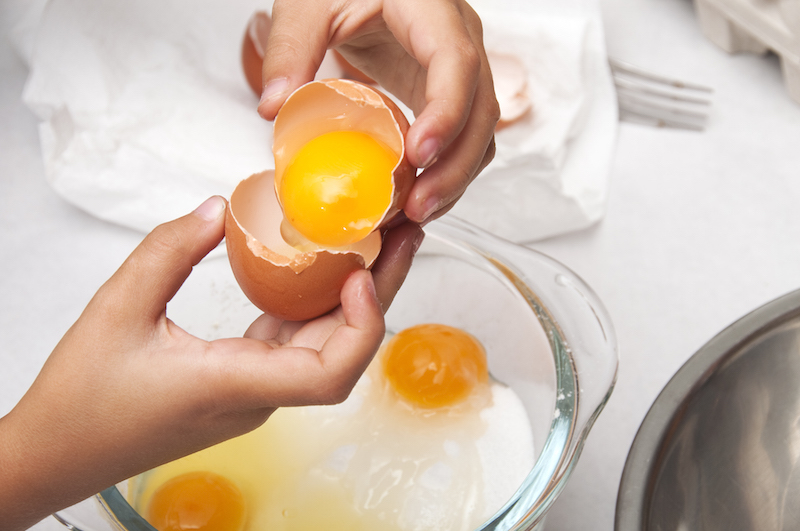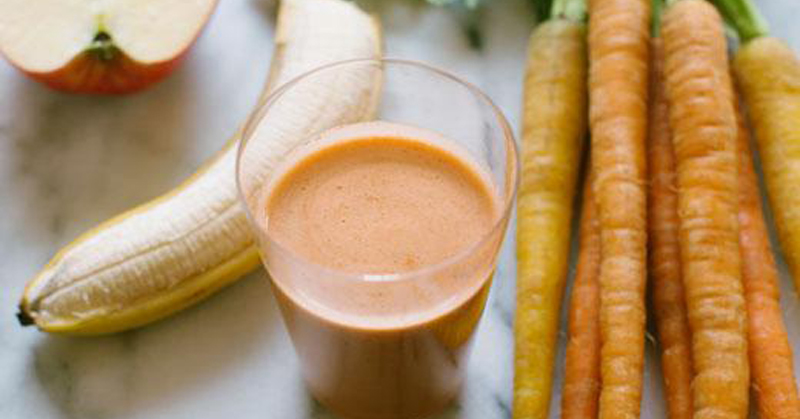Lifestyle – It’s hard to pick up a magazine, check your Instagram feed or even talk to your friend without being given some diet tip, welcomed or not. Some advice out there is good, some not so much. There are a few tips that I’ve heard over and over that make me want to scream, “nooooo!”
Read on, and you may be happy to learn you can ditch these tips (along with that cereal that tastes like cardboard):
1. DON’T EAT BANANAS AND CARROTS, THEY ARE TOO HIGH IN CARBS AND SUGAR.
It is true that certain foods (even healthy ones) like bananas and carrots are slightly higher in carbohydrates and sugar (respectively) compared to other fruits and vegetables. But it’s also true that our country did not become obese by over consuming either of them.
A small banana has 23 grams of carbs compared to a small apple which has 21 grams. If you’re trying to lose weight, you do need to watch your total carb and sugar consumption (even from foods like fruit), but that doesn’t mean you can’t have a cup of berries after dinner one day and a banana in your oatmeal the next morning.
The key is not to over-consume — anything. Stick to this advice and don’t point that finger at the beets in your salad. Also, don’t lump carbohydrates or sugar found naturally in fruit and veggies into the same category as sugar from jelly beans, cake and cookies.
2. AVOID GLUTEN, NO MATTER WHAT.
If you don’t have celiac disease or a gluten sensitivity, going gluten-free may be unnecessary and could even cause you to gain weight and consume unhealthy artificial ingredients. A healthy diet — for anyone — should be naturally gluten-free, for the most part.
If you eat a whole, real-food diet of vegetables, fruit, lean protein, healthy fats with the proper amounts of unprocessed whole grains thrown in, you won’t be consuming much gluten at all. If you don’t have a specific medical need to cut it out, this should be sufficient for most of us.
The problem is that most of us consume gluten in the form of unhealthy foods like pasta, cake and refined breads. When a lot of people go gluten-free, they view it as a free pass to indulge in gluten-free products, like four pieces of gluten-free bread at breakfast and two gluten-free cookies after lunch. Sorry, friends but a cookie is still a cookie, even when it’s gluten-free. Gluten-free products generally don’t have any less fat, sugar or calories than the traditional counterparts.
So should we all reduce (or eliminate) gluten-laden products from our diets? Absolutely, yes, do away, to a large extent, with pasta, cakes, cookies and refined breads. But don’t substitute with gluten-free versions.
3. DON’T EAT EGG YOLKS, STICK TO THE WHITES.
Still ordering the egg white omelet at your favorite diner? Stop. Studies have shown that there is no direct correlation between the regular consumption of whole eggs and an increased risk of heart disease. The 2015 Dietary Guidelines for Americans was adjusted to reflect this by eliminating any recommended limit on dietary cholesterol (which eggs are high in), because they found it to have no effect on blood cholesterol. Something many of us dietitians have been chatting about for years.
Research also shows that adding up to one whole egg daily to your diet may lower your risk of stroke. Eating the whole egg also offers you inflammation-fighting antioxidants as well as vitamins D, B12 and minerals selenium, zinc and iron. Egg yolks are also the most concentrated source of choline, an under-consumed, essential nutrient important to brain health.
4. ALL CALORIES ARE EQUAL. WATCH THEM.
Still pulling out your calculator and adding up the calories you eat in a day? Save the math for your finances. While watching your total calorie intake is important, 100 calories of a cupcake or pretzels is not the same as 100 calories of avocado mash or almonds. These foods will vary greatly as far as what nutrients they provide for your health (a cupcake provides sugar and unhealthy fats, while avocado mash will give you fiber, healthy fat and antioxidants). They will also vary as far as how these nutrients affect hunger hormones and how they play a role in our satiety (staying satisfied), both of which will affect how much we end up eating and how much ends up on our waistline.
When you’re indulging in that cupcake, choose to see it as just that, an indulgence, and when you’re choosing a calorie-controlled snack, like pretzels, make a more nutrient dense choice that will work for you, not against you.
5. STICK TO LOW-FAT FOODS, FAT MAKES YOU FAT.
Fat. Is. Your. Friend. Fat does not make you fat. It made some kind of sense years ago to explore the idea that high-fat foods turned to fat in our bodies, but that scientific pursuit just didn’t pan out. Researchers have found that a diet low in fat and high in carbohydrate actually causes weight gain.
We’re fat smart now and we know that you need roughly 30 percent of your calories to come from fats (healthy fats!) in order for you to be your leanest and healthiest self. This means there is room at every meal for some kind of fat. Think peanut butter on toast at breakfast, cashews at snack time and sliced avocado on your lunchtime sandwich. Low-fat foods generally have added sugar (to add flavor) when the fat is removed. This ends up making you feel less satisfied, craving more food and triggering your fat-storing hormones. Instead of going for low-fat products, go for the real version and listen to your body. It will thank you.
This article originally appeared on TODAY Health and Wellness

